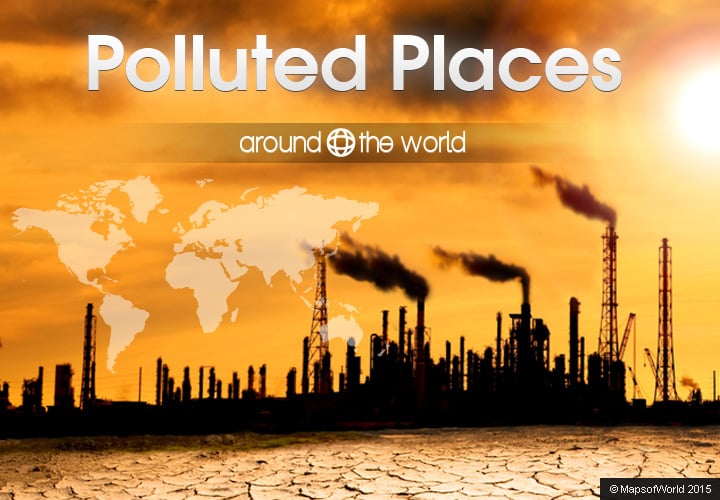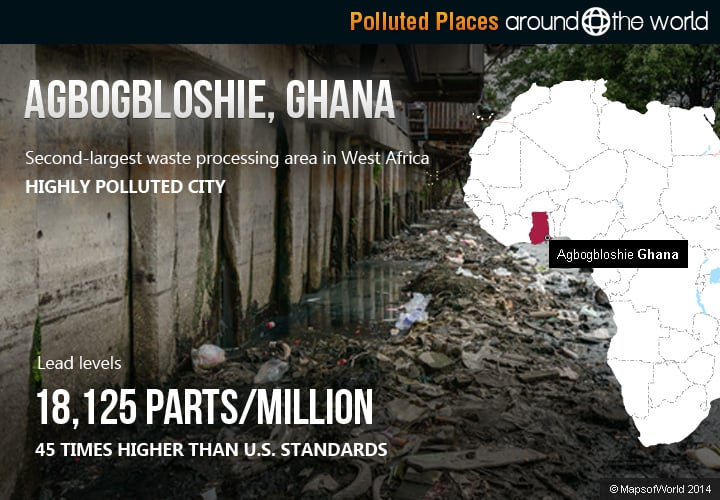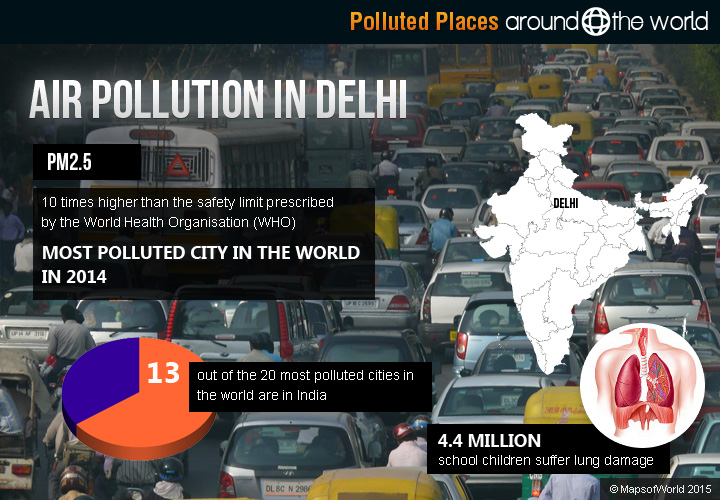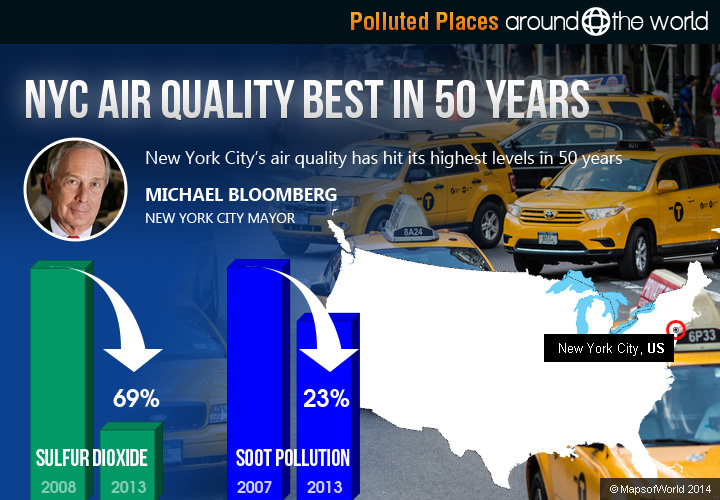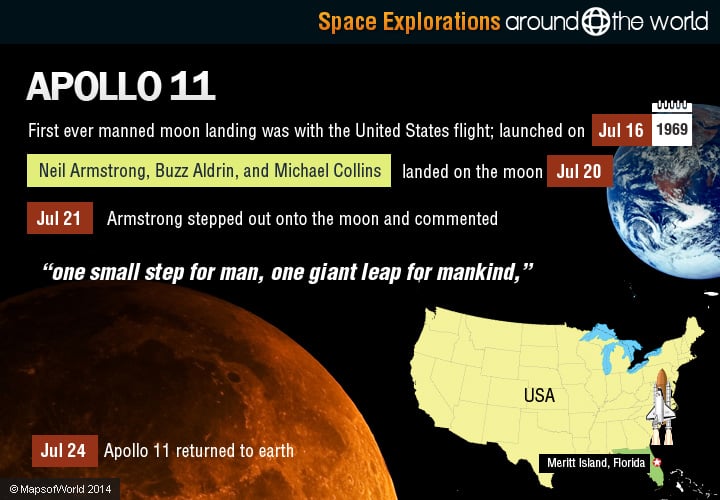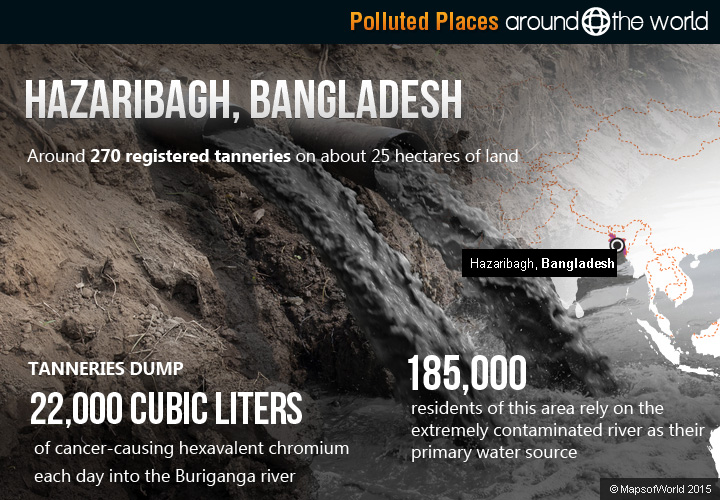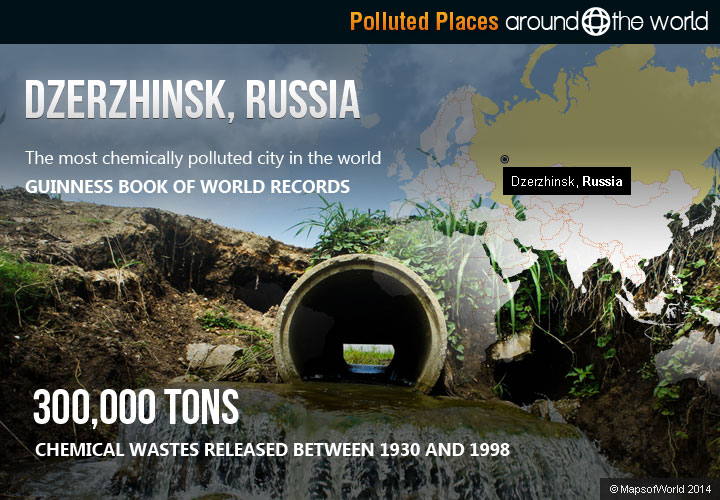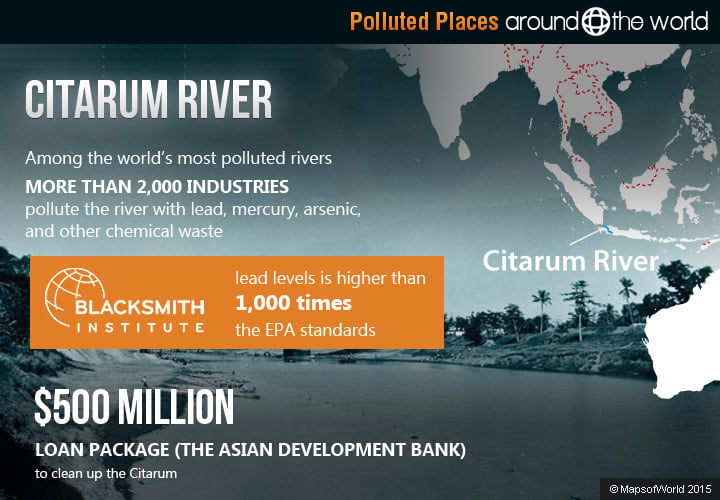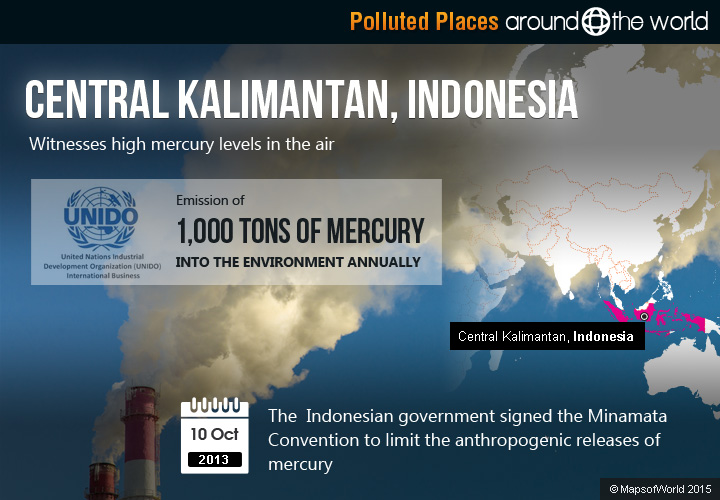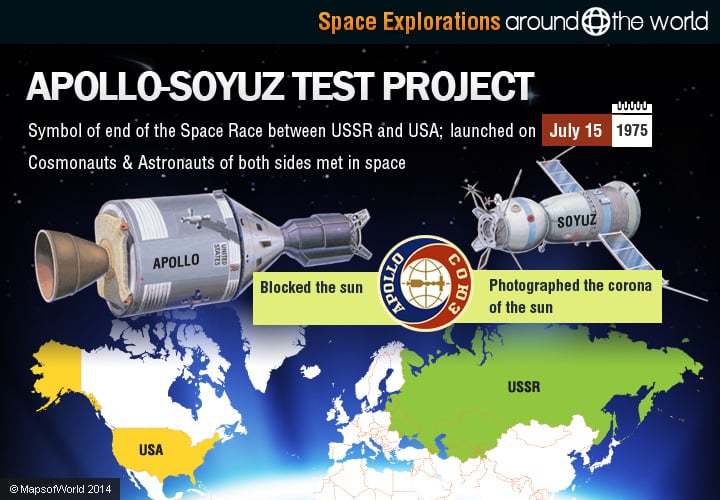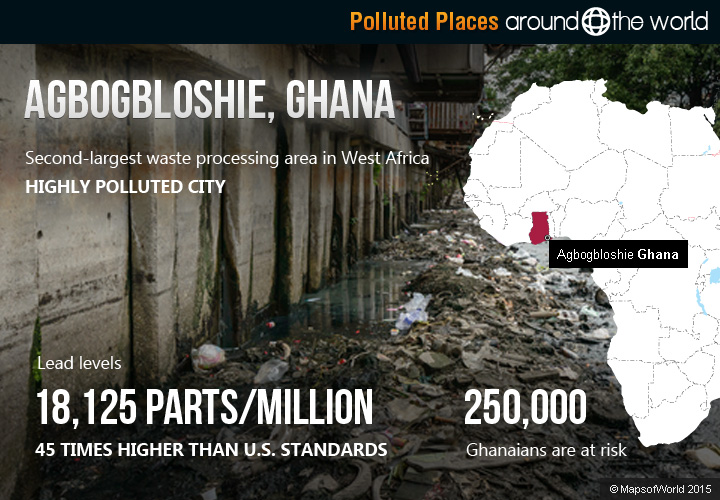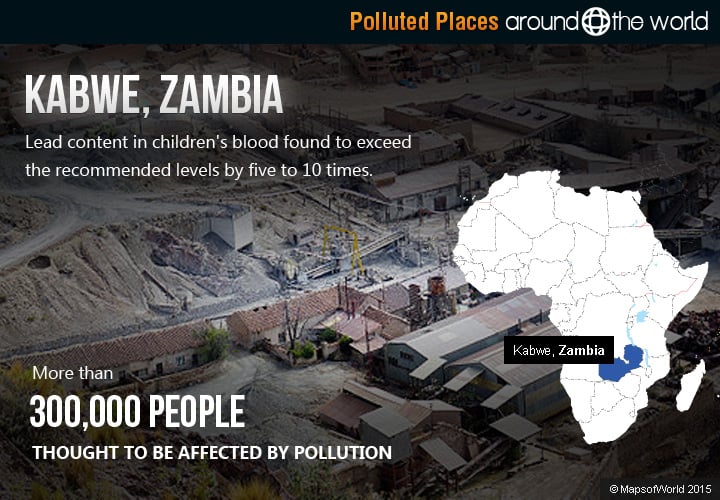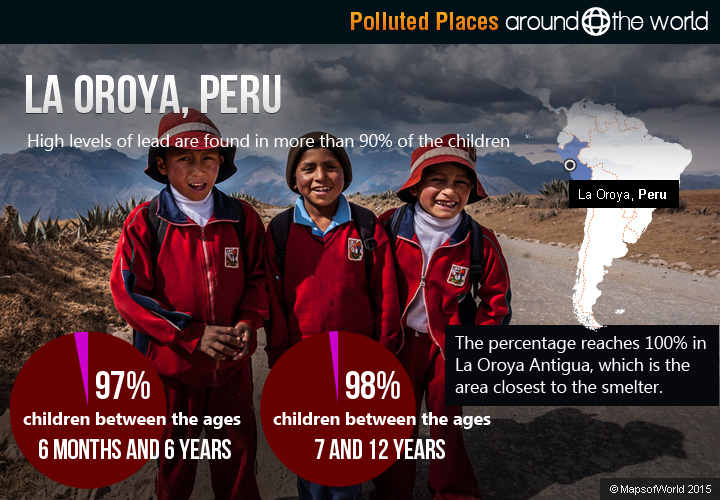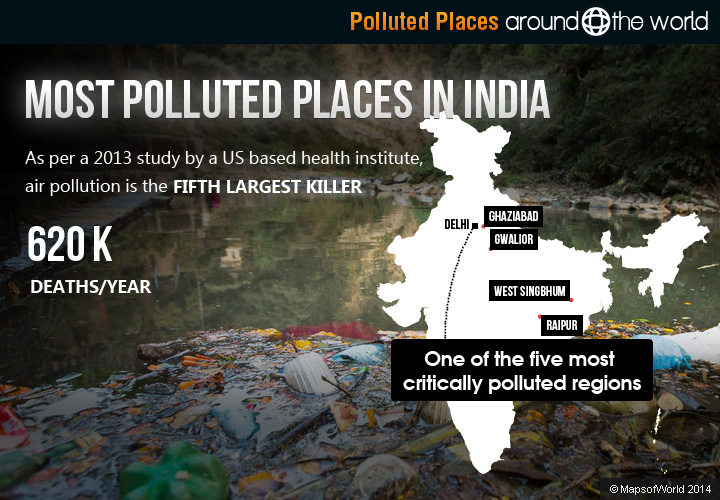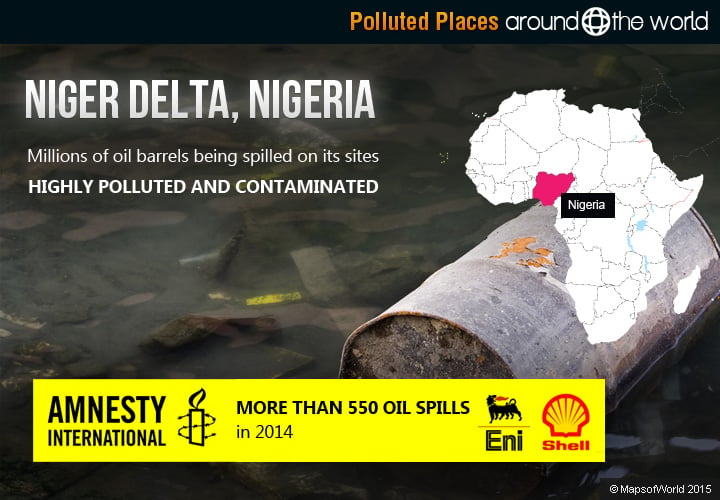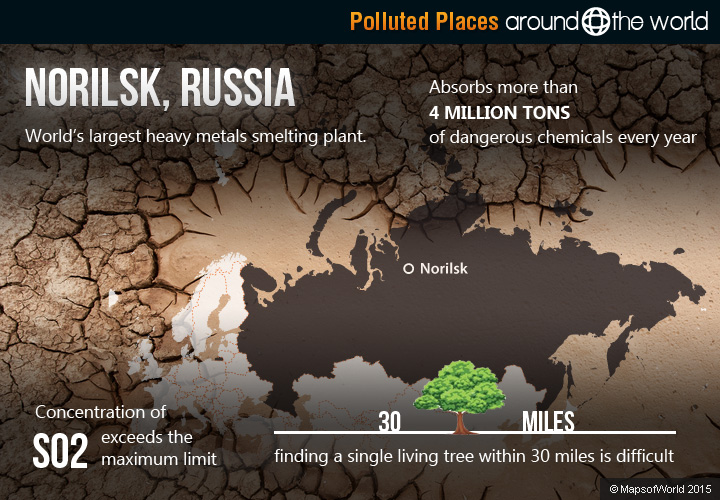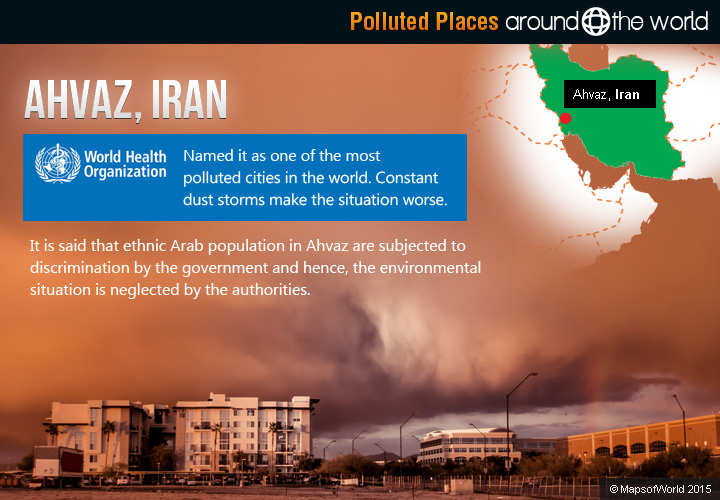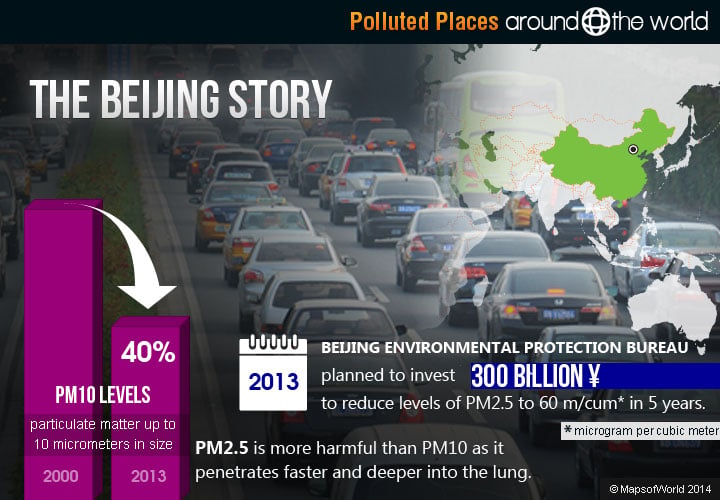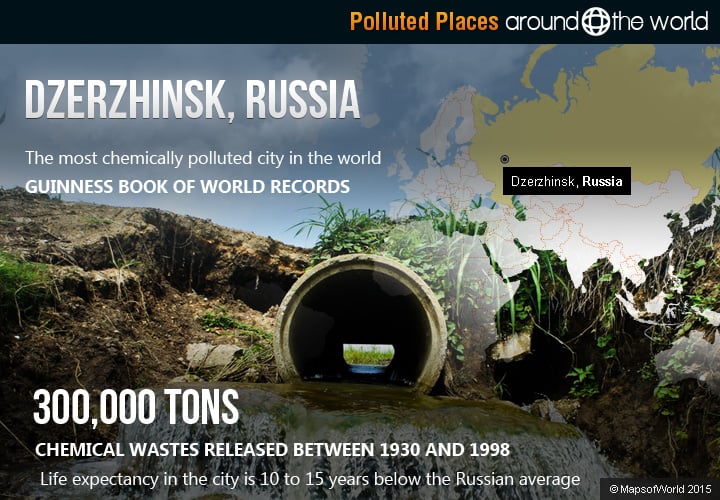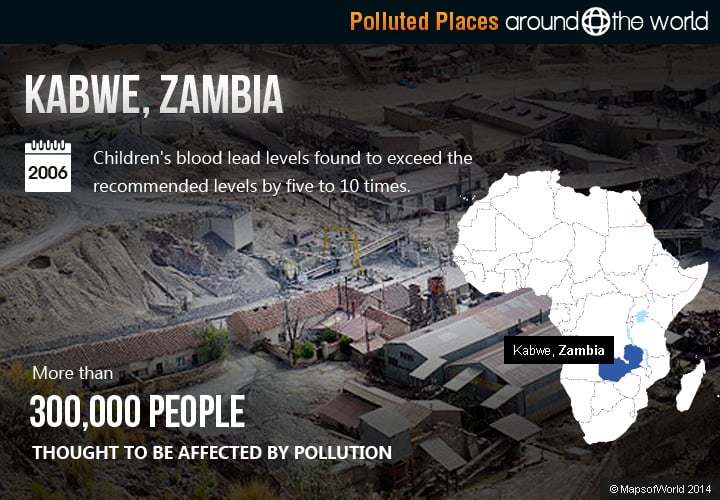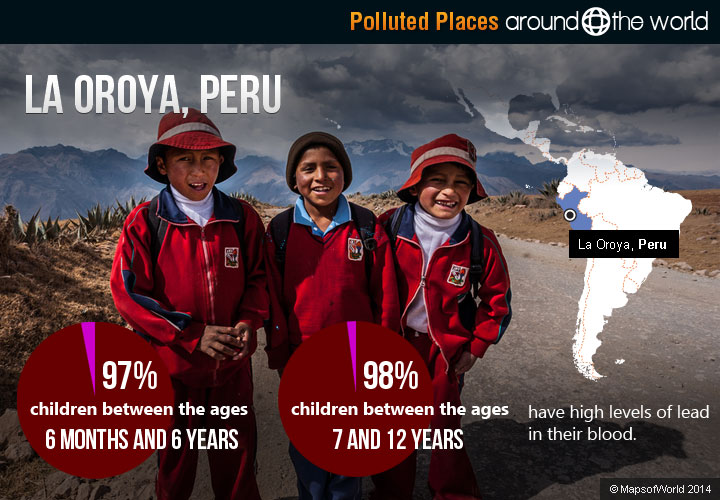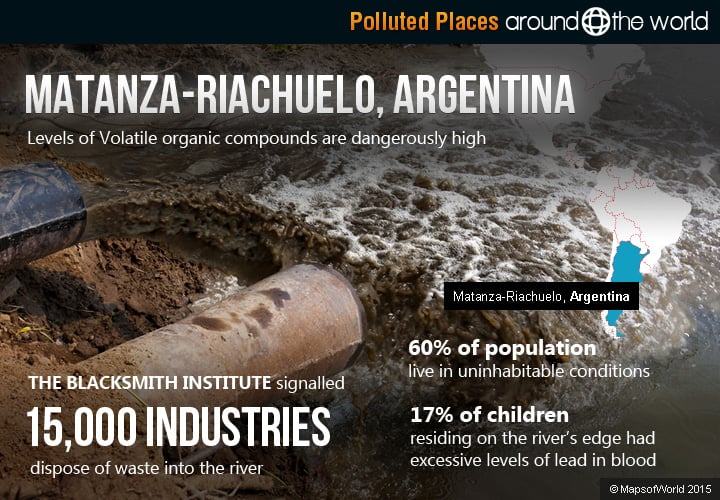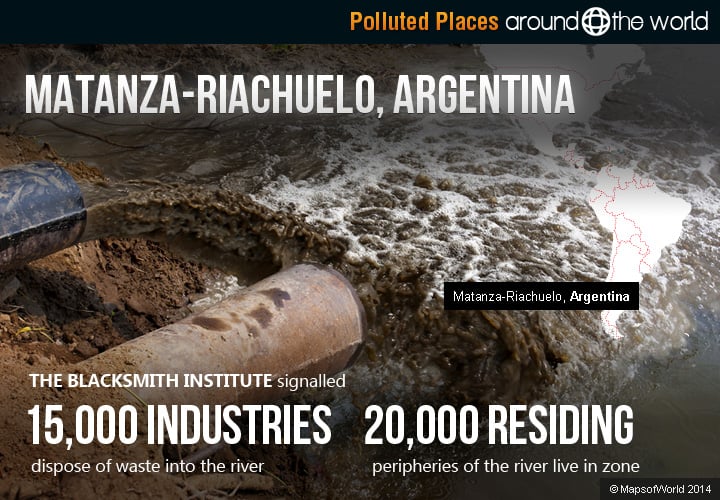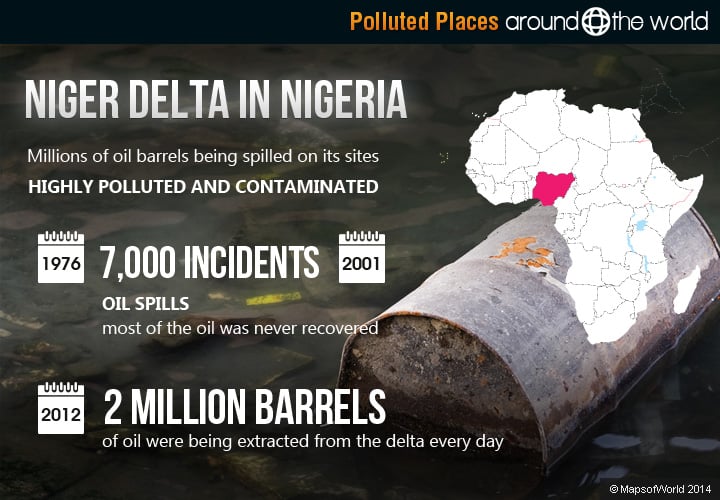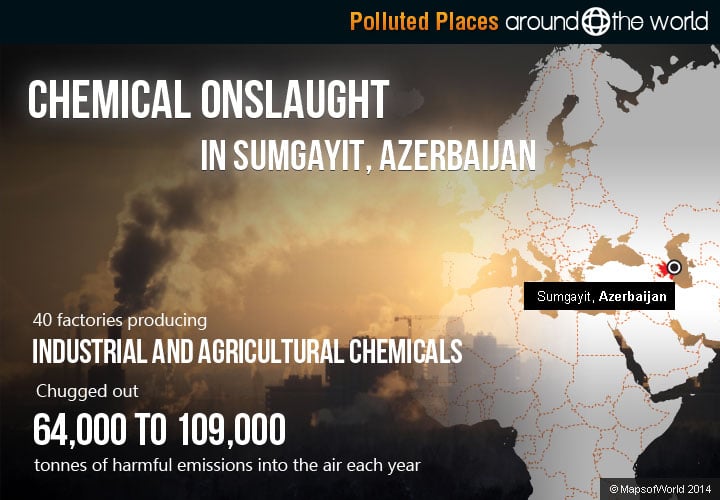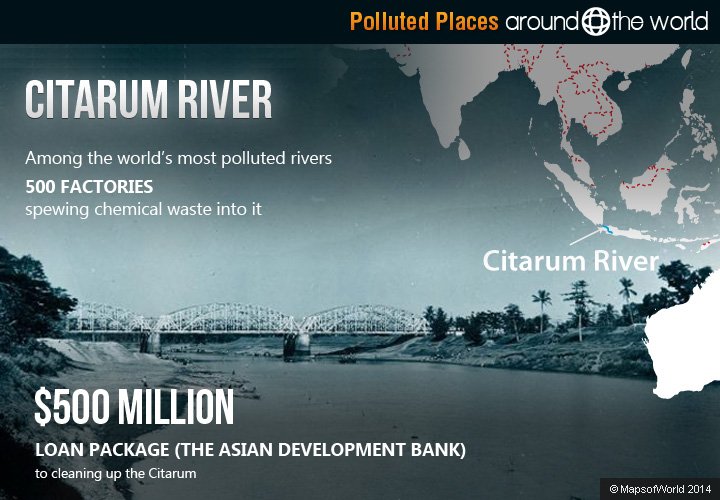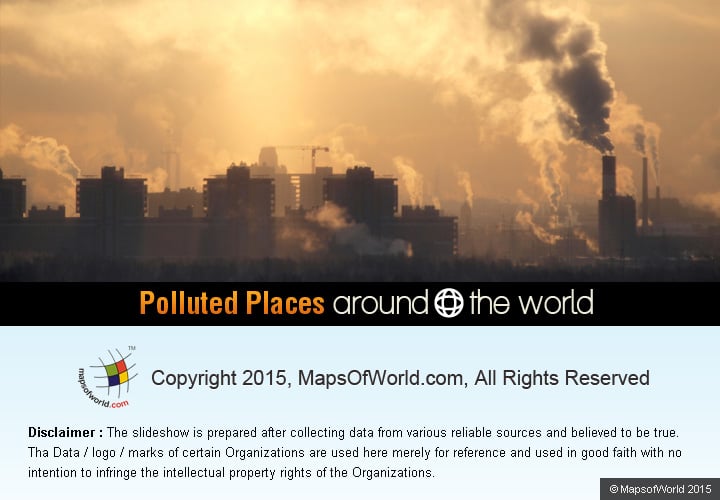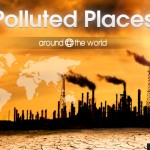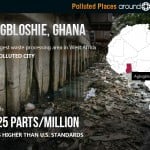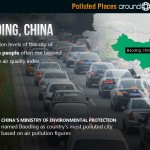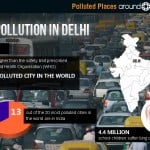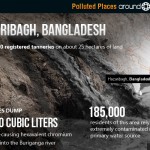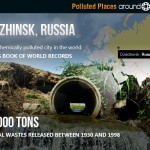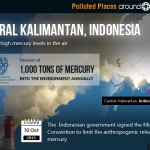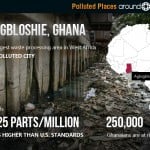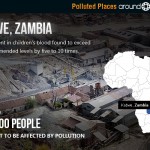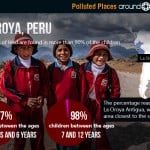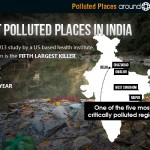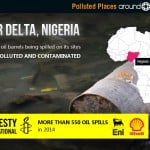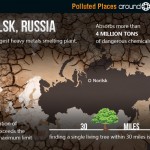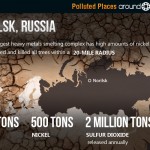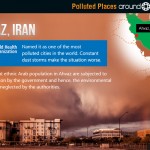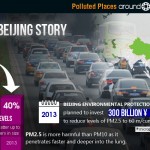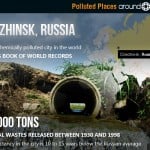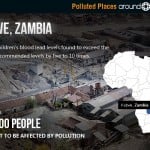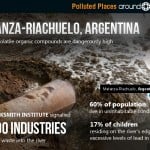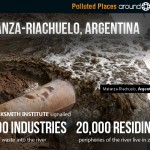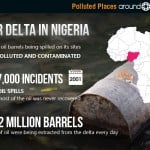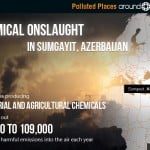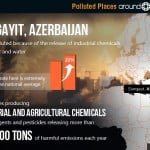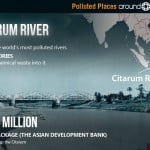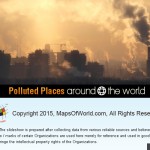Someone had aptly said that people will never be bothered about pollution because they don’t stop talking long enough to take a deep breath. The world rarely thinks about what it is doing with its waste. From ocean trash to e-waste, the ‘tsunami’ of toxic elements is affecting more and more countries across the world.
Here is a rundown of the most polluted places around the world having either the worst air or water quality due to industrial, chemical, and waste processing:
Chernobyl, Ukraine
Chernobyl is known for the worst ever international nuclear disaster in history. A fiery meltdown in the nearby nuclear reactor’s core on April 26, 1986 released 100 times more radiation than the atom bombs dropped over Hiroshima and Nagasaki. The town is now mostly uninhabited and unsafe owing to radioactive contamination. There are 1.8 million people residing in the territories of Ukraine, Russia, and Belarus, which are still considered contaminated.
Delhi, India
A recent survey has found the deadly PM2.5 levels in India’s capital city is 10 times higher than the safety limit prescribed by the World Health Organisation (WHO). In 2014, WHO ranked Delhi as the most polluted city in the world for having the highest concentration of PM2.5 (particulate matter up to 2.5 micrometers in size) among 1,600 cities across the world. Moreover, 13 out of the 20 most polluted cities in the world are in India. Statistics reveal that half of the city’s 4.4 million school children suffer lung damage due to the poisonous air.
Baoding, China
In February 2015, China’s Ministry of Environmental Protection named Baoding as country’s most polluted city based on air pollution figures. The pollution levels of this city of 10 million people often rise beyond 300 on the air quality index, which is considered hazardous for human health.
Citarum River, Indonesia
The Citarum River in Indonesia, the third longest river in Java, has been ranked amongst the world’s most polluted rivers. More than 2,000 industries pollute the river with lead, mercury, arsenic, and other chemical waste. Hazardous substances like phthalates are found in the river and they have the potential to cause reproductive disorders and cancer, as per recent reports. The Blacksmith Institute has found lead levels in the river higher than 1,000 times the EPA standards. The Indonesian government has begun the work of cleaning up Citarum with Asian Development Bank offering a $500- million loan.
Dzerzhinsk, Russia
This city holds a Guinness Book of World Records for being The Most Chemically Polluted Town. Dzerzhinsk is a major center for chemical manufacturing and weapons and about 300,000 tons of chemical wastes like phenols and dioxins were said to be released here between 1930 and 1998. Life expectancy in the city is 10 to 15 years below the Russian average.
Agbogbloshie in Ghana
Agbogbloshie, which is the second largest waste processing area in West Africa, is also known to be a highly polluted city. Samples taken from around Agbogbloshie point to extremely high lead levels (18,125 parts per million), which is 45 times higher than US standards. As many as 250,000 Ghanaians are said to be at risk.
Norilsk, Russia
Norilsk has the world’s largest heavy metal smelting plant. The city’s atmosphere absorbs more than four million tons of dangerous chemicals every year. The concentration of SO2 in the air often exceeds the maximum limit. It is no wonder that finding a single living tree within 30 miles of the city is difficult.
Niger Delta, Nigeria
A recent US study has found that the Niger Delta is highly contaminated with millions of oil barrels being spilled on its sites regularly. The groundwater and soil have been heavily polluted in the process, which has also led to devastation of aquatic and agricultural communities. According to the report by Amnesty International, companies such as Royal Dutch Shell and ENI have admitted to more than 550 oil spills in the Niger Delta in 2014.
Hazaribagh, Bangladesh
Hazaribagh has around 270 registered tanneries on about 25 hectares of land. Tanneries dump 22,000 cubic liters of cancer-causing hexavalent chromium each day into the Buriganga river. Close to 185,000 residents of this area rely on the extremely contaminated river as their primary water source. Local children and teenagers working in the factories are directly exposed to toxicity.
Central Kalimantan, Indonesia
Central Kalimantan witnesses high mercury levels in the air. According to the United Nations Industrial Development Organization (UNIDO), more than 1,000 tons of mercury are released into the environment each year when mercury is used to extract gold from the ore. On October 10, 2013, the Indonesian government signed the Minamata Convention to limit the anthropogenic releases of mercury.
Sumgayit, Azerbaijan
Sumgayit is said to be highly polluted because of the release of industrial chemicals into the air and water. While it was a part of Soviet Union, there were more than 40 factories that manufactured products ranging from industrial to agricultural chemicals like detergents and pesticides releasing more than 100,000 tons of harmful emissions each year. This had a dreadful impact. The cancer rate here is extremely high – about 22% higher than the national average. Oil extraction activity in Sumgayit in Azerbaijan is also a major source of pollution. The offshore oil fields and refineries also generate large quantities of toxic waste and run-off.
Kabwe, Zambia
In Kabwe, levels of lead in child blood have been recorded on an average of five to 10 times the permissible limit recommended by EPA. Decades of unregulated lead mining resulting in pollution in this African city has led to serious health issues for the Kabwe residents. More than 300,000 people are said to be severely affected. Neurological disorder and stomach ailments are other health hazards affecting the natives.
La Oroya, Peru
In La Oroya, high levels of lead are found in more than 90% of the children. According to independent studies, 97% of children between the age of six months and six years, and 98% of those between seven and 12 years still have high levels of lead in their blood. Respiratory complications are common among the young ones. The percentage reaches 100% in La Oroya Antigua, which is the area closest to the smelter. The effects of lead poisoning are known to be irreversible.
Matanza-Riachuelo, Argentina
VOC or volatile organic compounds are said to be found in dangerous levels. As per the Blacksmith Institute, about 15,000 industries dispose of their waste into the river and that chemical plants are responsible for more than one-third of the pollution. Approximately 60% of around 20,000 people residing on the peripheries of the river live in zones considered inappropriate for humans. A recent study revealed that 80% of the wells near the river basin are not fit for drinking.
A recent Authority of Matanza-Riachulo Basin (ACUMAR) study revealed that 17% of children in Villa 26, which lies on the river’s edge, had excessive levels of lead in their blood. Of 126 children, 14.3% received an abnormal nutritional diagnosis and 18% were anemic. 45.5% of pregnant mothers were overweight and of these, 37.5% of those pregnant were anemic.
Ahvaz, Iran
The World Health Organization had named the city of Ahvaz in western Iran as one of the most polluted cities in the world. Constant dust storms make the situation worse. It is said that ethnic Arab population in Ahvaz are subjected to discrimination by the government and hence, the environmental situation in Ahvaz is neglected by the authorities.
Countries with the Cleanest Air
The Environment Protection Index-Yale study listed the following countries as having much cleaner air, based on several parameters (score is given out of 100, the higher the score, the cleaner the air).
Switzerland – 87.67 out of 100
Luxembourg – 83.29 out of 100
Australia – 82.4 out of 100
Singapore – 81.78 out of 100
Czech Republic -81.47 out of 100
Source: EPI-Yale study


